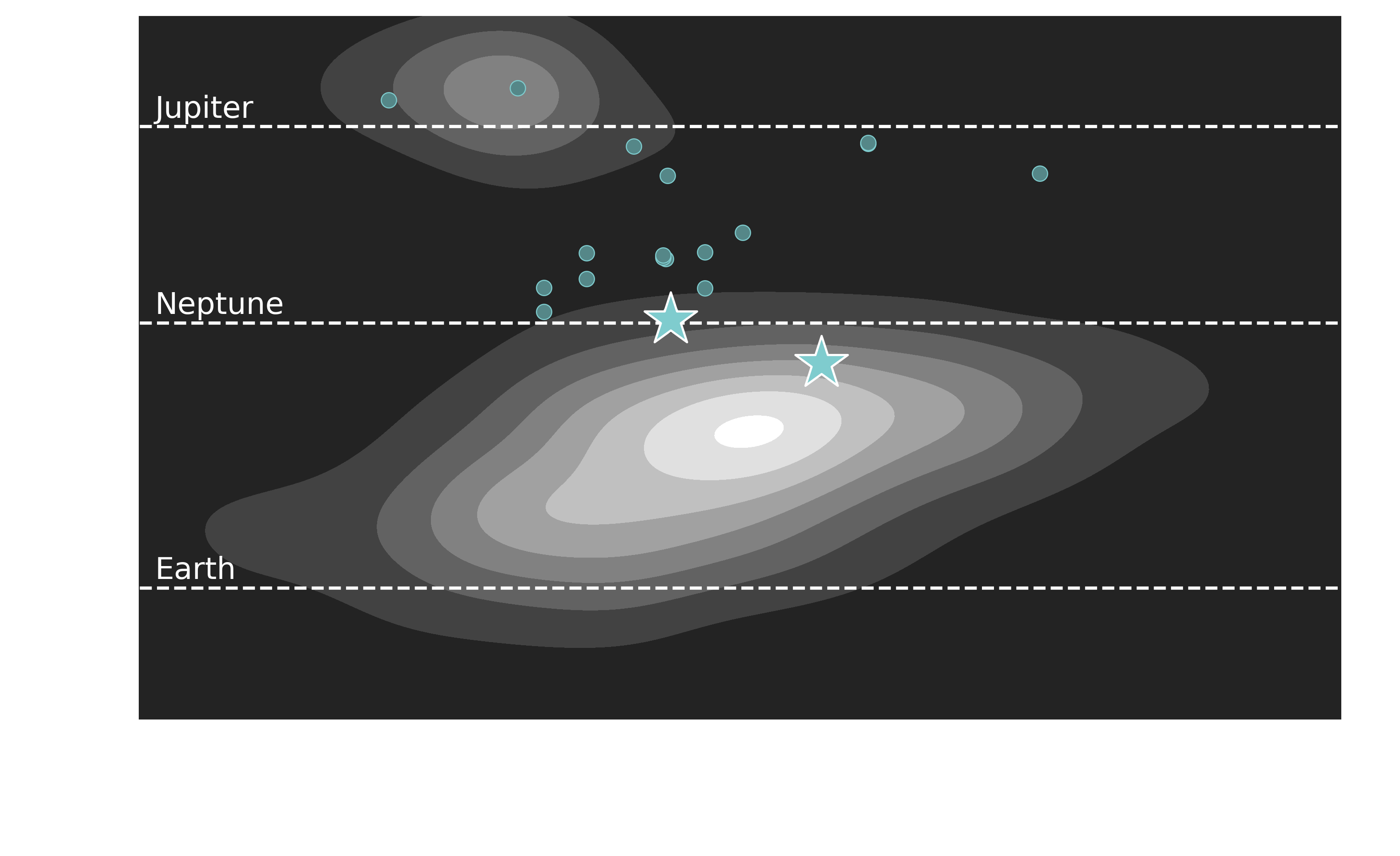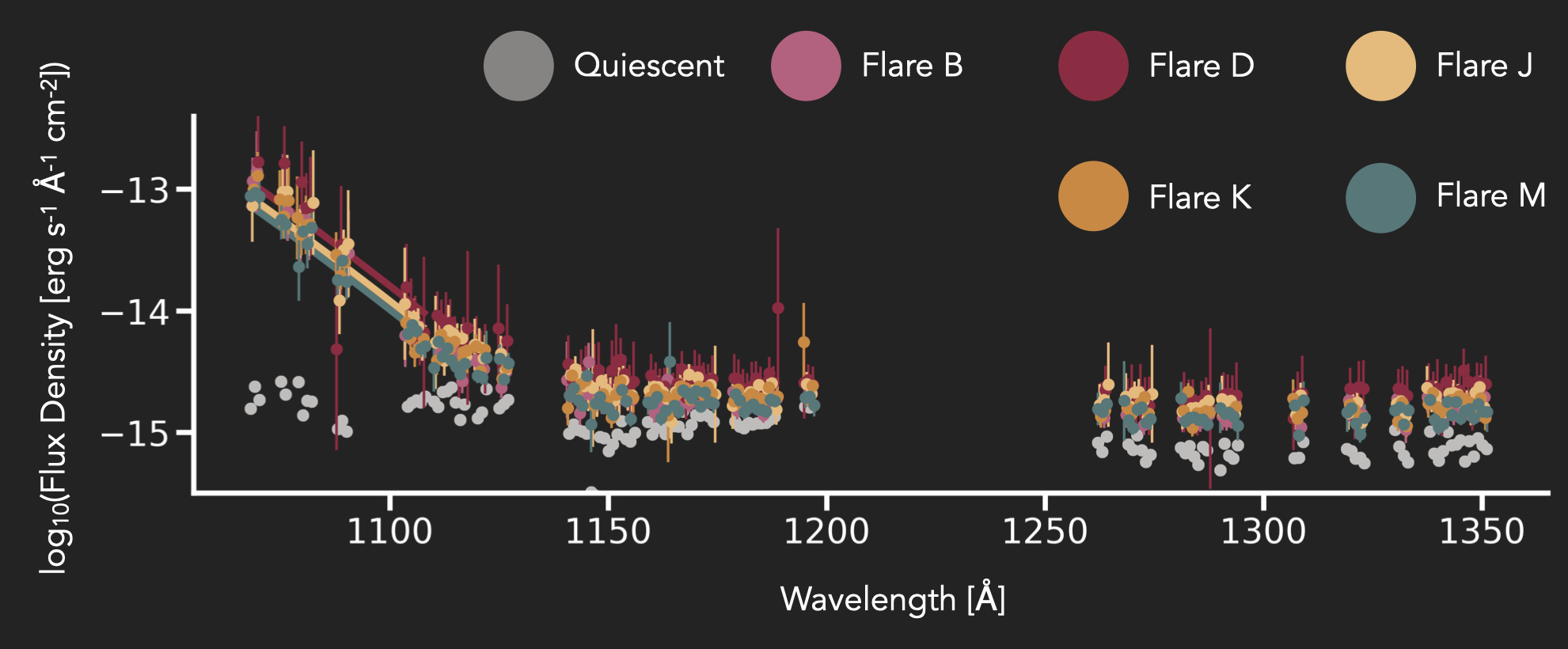AU Mic is a close (9.72pc)
22 Myr (Mamajek & Bell, 2014)
M dwarf with 2 transiting exoplanets
(Plavchan et al. 2020;
Martioli et al. 2021;
Gilbert et al. 2022).
Given its age, this system is a crucial benchmark for understanding the role
of stellar activity in shaping exoplanet atmospheres.
Understanding the contribution of stellar flares to atmospheric removal
has only just begun.
Garcia-Sage et al. (2017)
modeled EUV-driven proton and O+ escape from an Earth-like
planet around Proxima Centauri. They speculated that very energetic flares
could increase the ionization fraction at low-altitudes, indirectly
enhancing atmospheric escape.
Neves Ribeiro do Amaral et al. (2022)
accounted for the X-ray and UV (XUV) contribution of flare flux in
atmospheric escape from Earth-like planets around M dwarfs. The XUV flux
from flares produced surface water loss for planets with mass Mp
= 5 MEarth in their simulations. However, the effects of
radiation from frequent highenergy flares on short period, young planets
has not been fully investigated.




